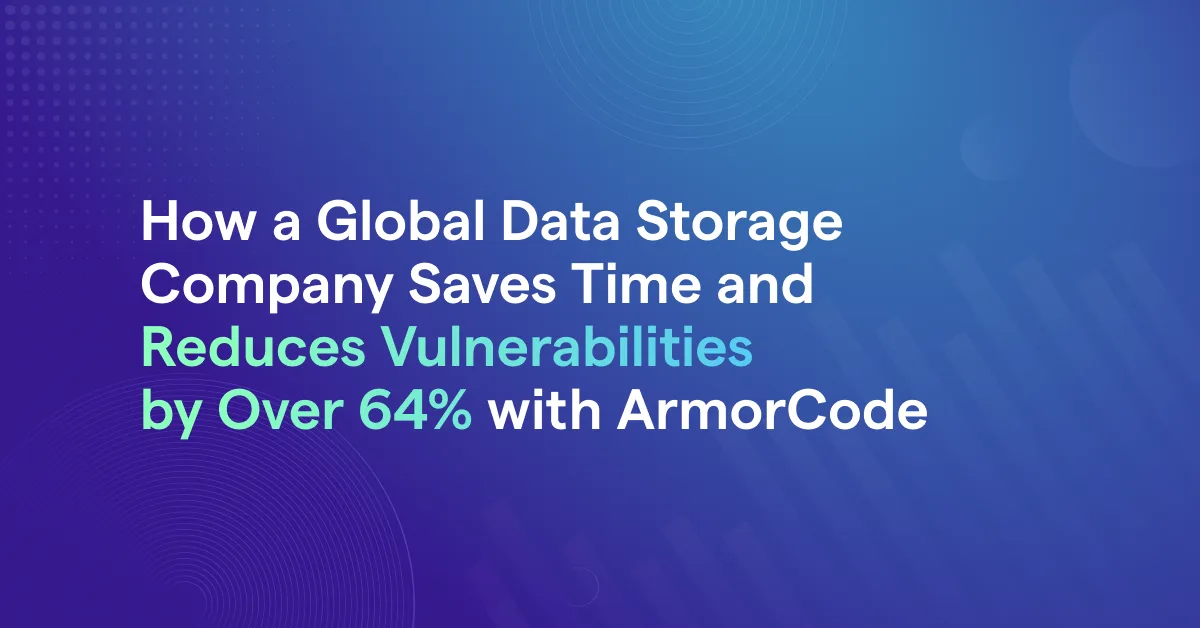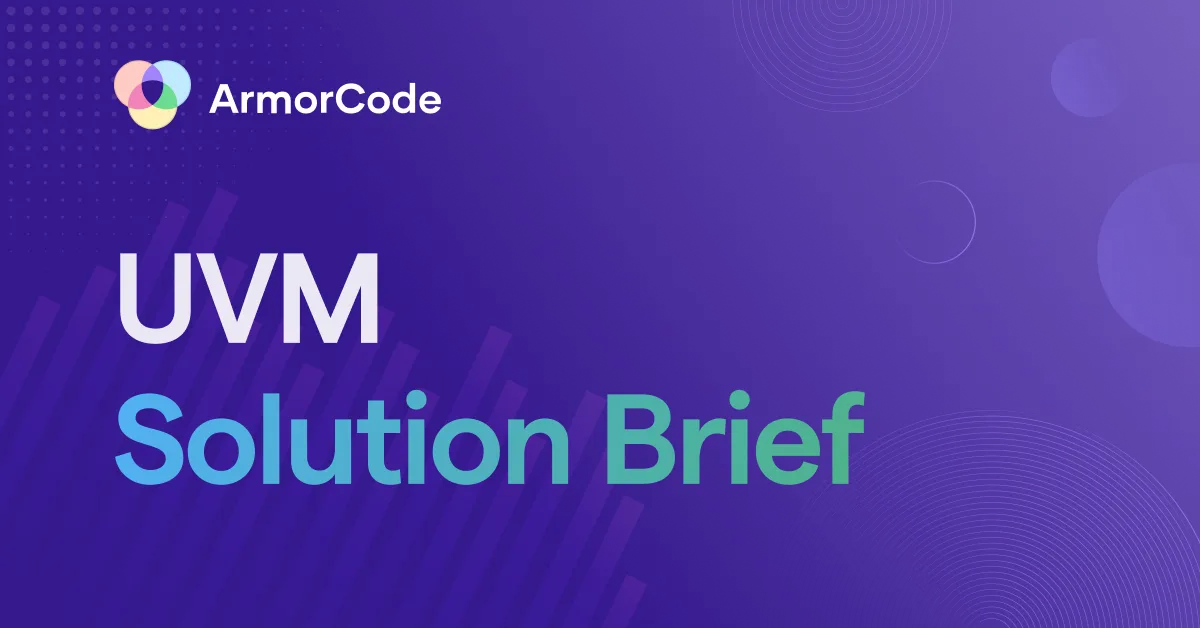What is Unified Vulnerability Management (UVM)?
Understand what Unified Vulnerability Management is and how it transforms modern security operations is key to strengthening your organization’s cyber resilience.
Table of Contents
The vulnerability landscape has fundamentally transformed. A decade ago, security teams managed vulnerabilities in distinct silos: operations teams handled infrastructure vulnerabilities, application security teams managed code weaknesses, and cloud teams managed their own set of findings. Each team used different tools, different prioritization methods, and different remediation processes.
Today, that approach is broken. Organizations deploy applications across hybrid cloud environments, leverage extensive open source libraries in every application, and operate containerized infrastructure that creates entirely new attack surfaces. Meanwhile, the volume of disclosed vulnerabilities continues to grow exponentially—not just in sheer numbers, but in complexity and interconnectivity.
This is where Unified Vulnerability Management (UVM) enters the picture.
What is Unified Vulnerability Management?
Unified Vulnerability Management (UVM) is the operational backbone for managing vulnerability risk across your entire organization. According to Forrester, a UVM solution serves as the primary book of record for all organizational vulnerabilities and improves and facilitates remediation workflows.
In essence, UVM acts as the central nervous system for vulnerability data—converting raw input from dozens of disparate scanners into prioritized, actionable tasks that your teams can actually execute. It consolidates vulnerability findings from infrastructure, applications, cloud, and endpoints into one unified system with coordinated remediation workflows.
The Evolution: Why UVM Emerged Now
Image: Vulnerability management evolved through distinct phases
Vulnerability Assessment (Late 1990s) focused purely on detection. Organizations would run scanners and generate reports identifying vulnerabilities, but there was no systematic process for remediation or follow-up.
Vulnerability Management (Early 2000s) introduced systematic processes. Organizations began running continuous scans, integrating findings with ticketing systems, establishing remediation SLAs, and implementing formal patch management workflows. However, the primary limitation remained: prioritization relied solely on CVSS scores, which do not account for business context.
Risk-Based Vulnerability Management (Mid-2010s) evolved to address prioritization challenges. Organizations began incorporating threat intelligence data and environmental context into their prioritization strategies, using methods such as known exploited vulnerabilities catalogs, exploit prediction scoring, and environmental factors to focus remediation efforts on vulnerabilities that actually pose material risk.
Unified Vulnerability Management (2020s) emerged as a critical necessity. The rapid expansion of cloud infrastructure, the proliferation of application security tools, and the adoption of containerized environments created multiple siloed vulnerability landscapes. Organizations found themselves with infrastructure vulnerabilities tracked in separate systems from application vulnerabilities, cloud findings disconnected from endpoint data—each managed by different tools with different scoring methods and remediation workflows.
The Technical Debt Problem
Without UVM, organizations accumulate significant technical debt:
- Manual Reconciliation: Security teams spend hours deduplicating findings across tools. The same vulnerability shows up in multiple platforms with different CVE IDs and severity scores.
- Remediation Chaos: Without unified visibility, infrastructure teams patch vulnerabilities without informing application teams. When applications are deployed, they may reintroduce the same issues through their own dependencies, resulting in duplicated remediation effort and prolonged exposure windows.
- Prioritization Breakdown: Different teams employ different prioritization methodologies based on their specific tools and workflows. The operations team prioritizes by CVSS scoring, the development team prioritizes by exploitability and reachability, and the cloud team prioritizes by exposure level. The result is that the same vulnerability receives different priority ratings depending on which team evaluates it.
- Compliance Gaps: When auditors ask “How many critical vulnerabilities does your organization have?”, the answer varies significantly depending on which tool provides the data. Without a unified source of truth, organizations cannot provide auditors with a coherent narrative demonstrating the maturity of their vulnerability management program.
- Team Friction: When vulnerabilities are exploited in production environments, accountability becomes unclear. Teams often blame each other—the operations team claims development should not have used that vulnerable dependency, while the development team argues that the infrastructure team should have applied the necessary patches. Without unified accountability structures and clear ownership, this friction delays response and undermines organizational security posture.
This is why understanding what is Unified Vulnerability Management is critical—it helps eliminate these inefficiencies by providing a single source of truth and unified accountability across teams.
What Unified Vulnerability Management Actually Does
1. UVM Data Consolidation and Normalization
UVM ingests vulnerability data from all sources:
- Traditional vulnerability scanners
- Application security tools
- Cloud security platforms
- Endpoint detection and response systems
It normalizes diverse data formats into a common schema, deduplicates findings across multiple tools so that the same vulnerability surfaces as a single record, and enriches data with threat intelligence, asset context, and business criticality information.
2. UVM Intelligent Prioritization
UVM applies composite risk scoring combining:
- CVSS Score (technical severity foundation)
- CISA KEV (is this known to be actively exploited?)
- EPSS (probability of exploitation)
- Threat Intelligence (active campaigns targeting your industry?)
- Business Context (asset criticality, exposure level, data sensitivity)
- Compensating Controls (is it protected by other security measures?)
Result: A prioritization that reflects actual organizational risk rather than technical noise, enabling teams to focus remediation efforts where they matter most.
Example: A CVSS 9.8 severity rating on an internal database server has significantly lower organizational risk than a CVSS 6.5 rating on an internet-facing, business-critical API. UVM recognizes this distinction through business context; teams focus their remediation efforts on what genuinely threatens the organization.
3. UVM Remediation Orchestration
UVM automatically:
- Assigns vulnerabilities to the correct team (infrastructure, development, cloud)
- Routes findings to appropriate ticketing systems
- Recommends specific remediation steps
- Tracks progress across all teams
- Validates when issues are resolved
This eliminates manual assignment overhead and ensures coordinated response across teams, reducing delays and improving overall remediation effectiveness.
4. UVM Unified Reporting and Analytics
UVM enables strategic reporting:
- Executive dashboards showing vulnerability trends and remediation velocity across the organization
- Operational metrics providing visibility into vulnerabilities by business unit and remediation status by team
- Compliance evidence specifically formatted for audit requirements
- Trend analysis identifying patterns, such as which vulnerability types are increasing or which teams are slower at remediation
Core Value: Technical Depth and Practical Impact
The Single Source of Truth
Organizations with multiple disparate vulnerability data sources face a fundamental problem: they receive conflicting answers to foundational questions. UVM becomes the authoritative source of truth. When leadership asks “How many critical vulnerabilities do we have?”, there is one definitive answer. Auditors receive coherent evidence demonstrating the systematic maturity of your vulnerability management program.
Practical Value: Clear audit trails, informed decision-making, meaningful trends.
Risk-Based Focus
Without business context integration, security teams expend considerable effort remediating low-impact issues while overlooking critical vulnerabilities. UVM’s composite risk scoring ensures remediation efforts are focused on vulnerabilities that pose genuine threats to your business operations.
Practical Value: Better resource allocation, faster time to remediation, reduced alert fatigue.
Cross-Team Coordination
Without UVM’s unified coordination, different teams often work on the same vulnerability independently. Infrastructure patches a critical library in the operating system; the development team remains unaware. When the application is deployed, it carries its own vulnerable copy of the same library, negating the infrastructure team’s remediation efforts. UVM maintains a single coordinated workflow across all teams, ensuring remediation happens systematically across the organization.
Practical Value: No duplicated effort, faster overall remediation, clear accountability.
Remediation Acceleration
Automatic assignment of remediation responsibilities, intelligent ticket creation across relevant systems, and immediate presentation of remediation recommendations replace manual handoffs and communication delays. Progress is tracked comprehensively in one location, with clear visibility into any remediation blockers or obstacles.
Practical Value: Mean time to remediation (MTTR) decreases significantly; security team manual overhead is substantially reduced through automation; organizational visibility into remediation blockers improves decision-making and removes impediments.
The Path Forward: UVM Implementation Progression
Organizations follow a clear maturity path:
Stage 1: Unify Everything – Consolidate all vulnerability data into one system. Eliminate silos. This alone dramatically reduces confusion and overhead.
Stage 2: Apply Risk Scoring – Move beyond raw CVSS scores to business-normalized prioritization. Focus teams on what actually matters.
Stage 3: Coordinate Remediation – Implement unified workflows across teams. Track progress in one place. Remove coordination overhead.
Stage 4: Strategic Expansion – With tactical vulnerability management working smoothly, progress toward exposure management—defining and defending your attack surfaces strategically.
AI’s Role in Modern UVM
Today’s AI role in UVM typically involves:
- Correlating among multiple attributes and bringing Findings together
- Intelligent remediation recommendations based on vulnerability context
- False positive filtering
- Ingestion of historical and third-party penetration testing reports
Unified Vulnerability Management Solutions
ArmorCode Platform unifies vulnerability data across the entire application and infrastructure attack surface.
ArmorCode’s UVM Approach:
- Multi-source ingestion from application security tools, infrastructure scanners, cloud security platforms, and endpoint detection
- Intelligent correlation identifies duplicate findings and related vulnerabilities
- Business-centric prioritization combining technical severity, advanced threat intelligence, asset criticality, and business impact
- Cross-functional orchestration automatically routes remediation to development and infrastructure teams
- Continuous compliance, maintaining audit trails, and automated compliance reporting
Anya Intelligence: ArmorCode’s AI assistant generates intelligent remediation recommendations and identifies opportunities for improvement.
Risk Quantification: ArmorCode quantifies vulnerability risk in business terms
Getting Started: What’s Next?
If you’re struggling with vulnerability data silos, fragmented remediation processes, or the challenge of prioritizing thousands of findings across multiple tools and teams, it’s time to explore UVM.
ArmorCode’s AI-powered Platform consolidates all your vulnerability data into one authoritative system, applies intelligent risk-based prioritization, and orchestrates systematic remediation across your entire organization.
Schedule a Demo to see how ArmorCode unifies your vulnerability landscape, eliminates silos, and accelerates remediation. And also see what Unified Vulnerability Management can achieve for your organization.
Learn More About ArmorCode’s UVM Solution to explore how our platform consolidates, prioritizes, and remediates vulnerabilities at scale.
Transform your vulnerability management from reactive firefighting to strategic, systematic risk reduction.


